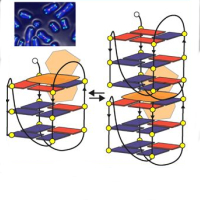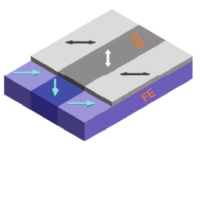Trimethyltin Mediated Covalent Gold-Carbon Bond Formation

Spectroscopic evidence of C-Au bond formation, responsible for the “electron gateway” state, is shown in the process of TrimethylTin break-up on gold.
A.Batra et al., J. Am. Chem. Soc., 2014, 136 (36), pp 12556–12559
The formation of covalent gold-carbon bonds is studied in benzyltrimethylstannane (C10H16Sn) deposited on Au in ultra high vacuum. Through X-ray Photoemission Spectroscopy and X-ray absorption measurements, we find that the molecule fragments at the Sn-Benzyl bond when exposed to gold surfaces at temperatures as low as 380K. We show that the resulting benzyl species is stabilized by the presence of Au(111), but only forms covalent Au-C bonds on more reactive Au surfaces like Au(110). In addition, we present spectroscopic proof for the existence of an electronic ‘gateway state’ localized on the Au-C bond that is responsible for its unique electronic properties. Finally, we use density functional theory based nudged elastic band calculations to elucidate the crucial role played by the undercoordinated Au surface in the formation of Au-C bonds.

Arunabh Batra, Gregor Kladnik, Narjes Gorjizadeh, Jeffrey Meisner, Michael Steigerwald, Colin Nuckolls, Su Ying Quek, Dean Cvetko, Alberto Morgante, and Latha Venkataraman
https://pubs.acs.org/doi/abs/10.1021/ja5061406








